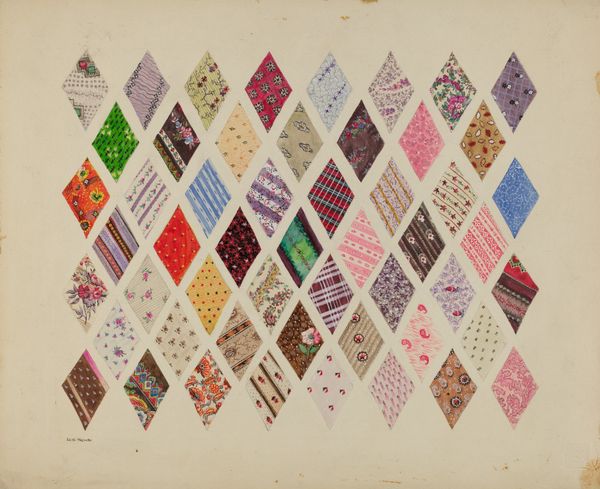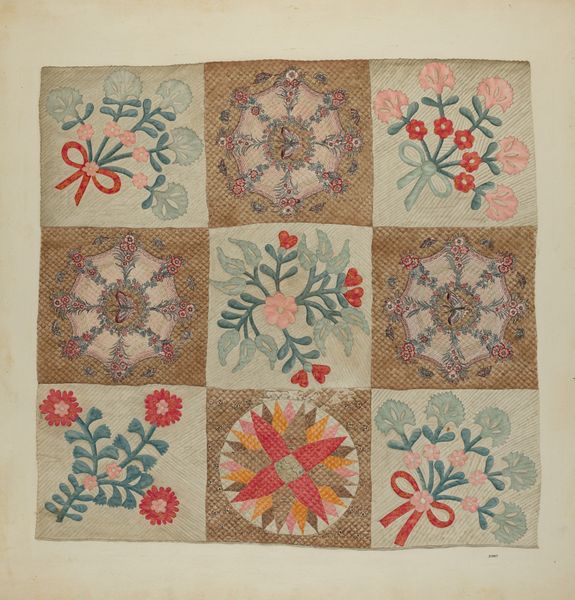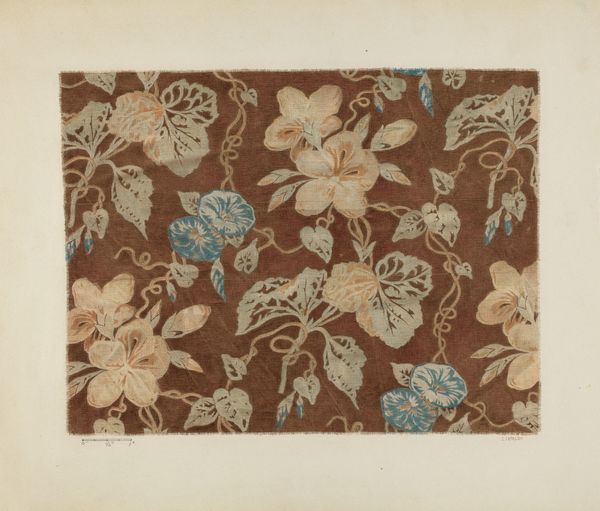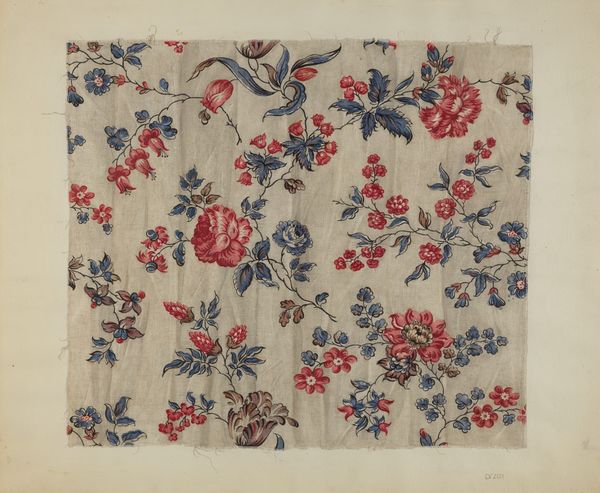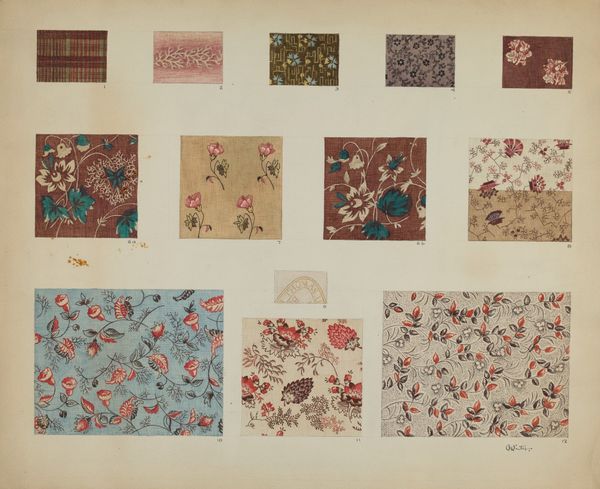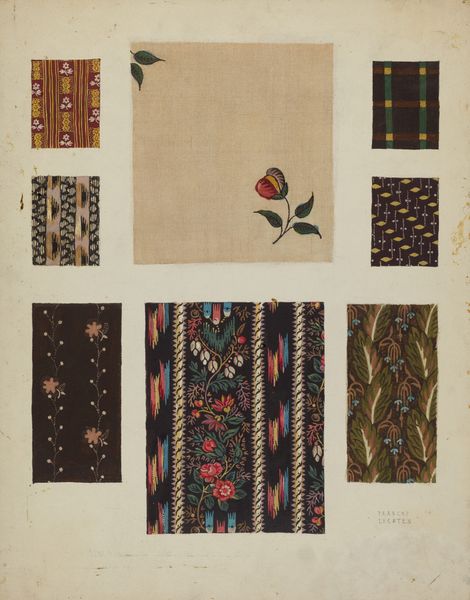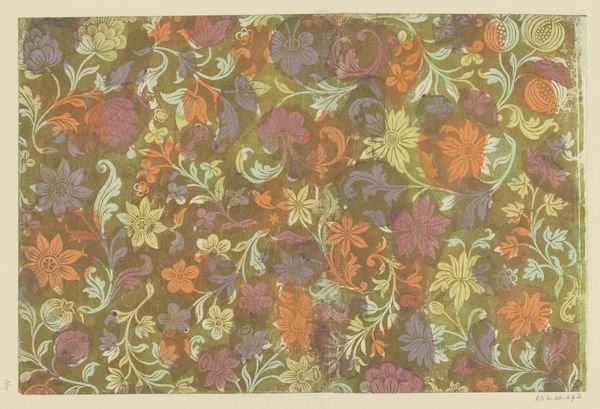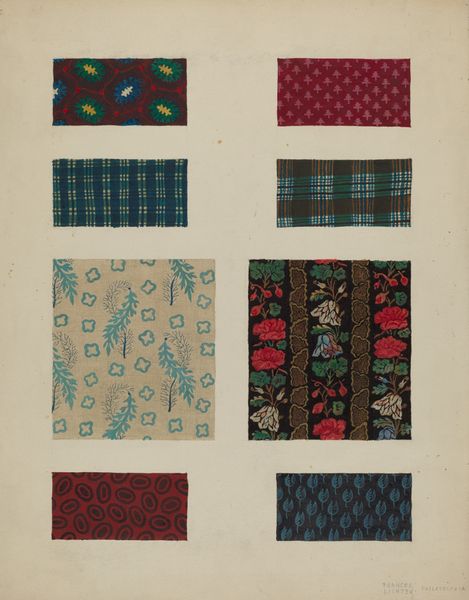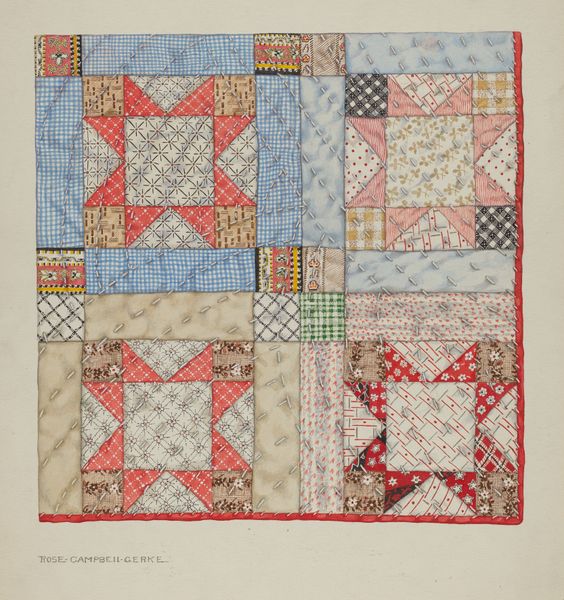
paper, watercolor
#
folk-art
#
water colours
#
paper
#
watercolor
#
folk-art
#
watercolor
Dimensions: overall: 37.8 x 45.5 cm (14 7/8 x 17 15/16 in.) Original IAD Object: 96" long; 84" wide
Copyright: National Gallery of Art: CC0 1.0
Editor: We’re looking at "Patchwork Quilt," a watercolor and ink drawing on paper from around 1938 by A. Zimet. I’m struck by the contrasting patterns and the domestic feeling it evokes. What do you see in this piece, especially considering its time period? Curator: It's fascinating how Zimet translates the textile art of quilting into watercolor. Quilts, traditionally made by women, often represent community, resourcefulness, and storytelling through fabric scraps. Presenting it as a drawing on paper raises interesting questions about the perceived value of "high" versus "low" art forms in the late 1930s. Do you see any specific patterns or colors recurring that might give a clue as to what type of quilter, time, and materials were available at the time of this piece? Editor: Well, I notice a lot of floral patterns and some geometric shapes. The color palette feels a bit muted, maybe reflecting available dye technologies or just personal taste of the time. But why create this quilt design on paper instead of making an actual quilt? Curator: Exactly. Think about the context of the late 1930s, the end of the Great Depression. Resources were scarce. Could this watercolor represent an aspirational vision, a dream of domestic comfort and creativity during hard times? Or perhaps it was a study for a future quilt? Either way, the very act of creating this "patchwork quilt" elevates the everyday craft to a form worthy of artistic consideration. Does this perspective alter how you perceive the role of art and its relationship to society during this period? Editor: It definitely does. Thinking about the Depression-era context shifts my perspective. It's not just a pretty drawing, but maybe a quiet statement about resilience and the value of everyday creativity. Curator: Precisely! Art often reflects and shapes the social and cultural narratives of its time. Understanding the context is vital. Editor: I'll definitely be more attentive to historical context from now on. Thank you for opening my eyes to new way of thinking about art!
Comments
No comments
Be the first to comment and join the conversation on the ultimate creative platform.




